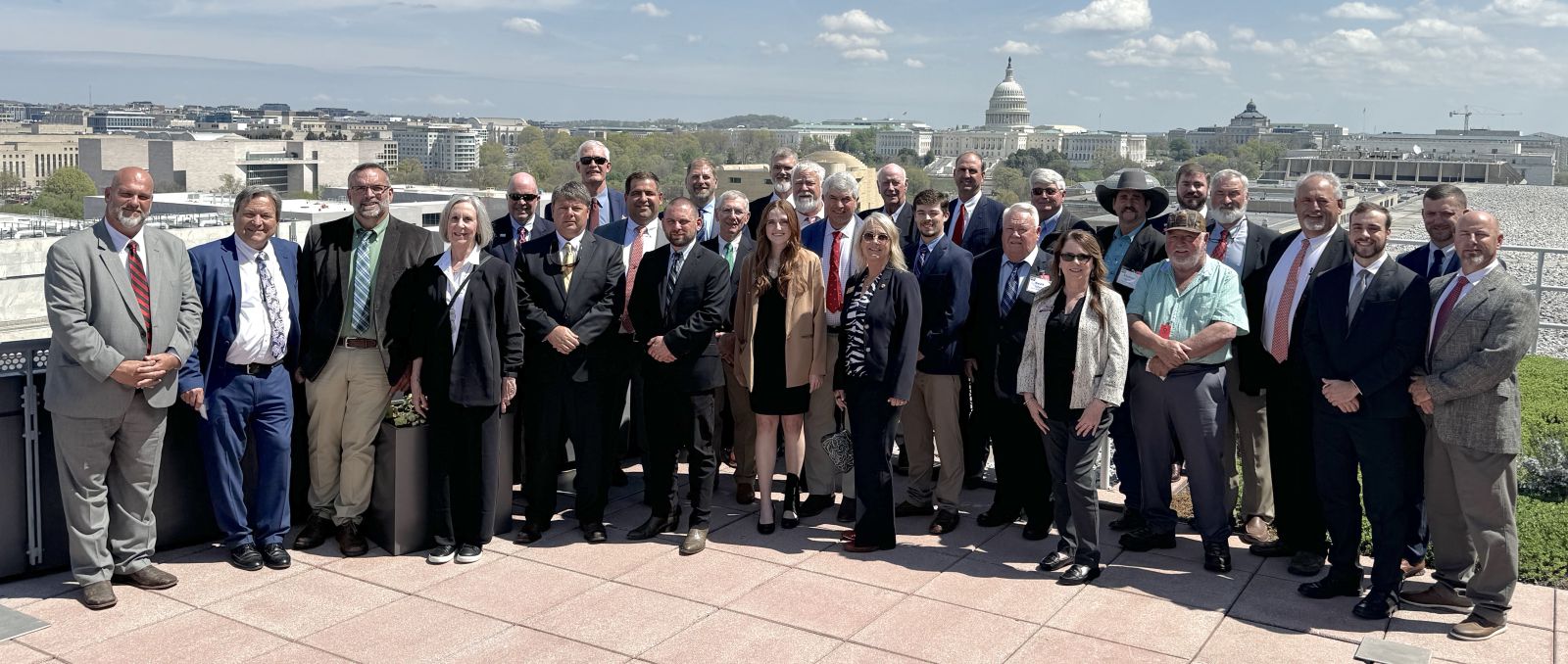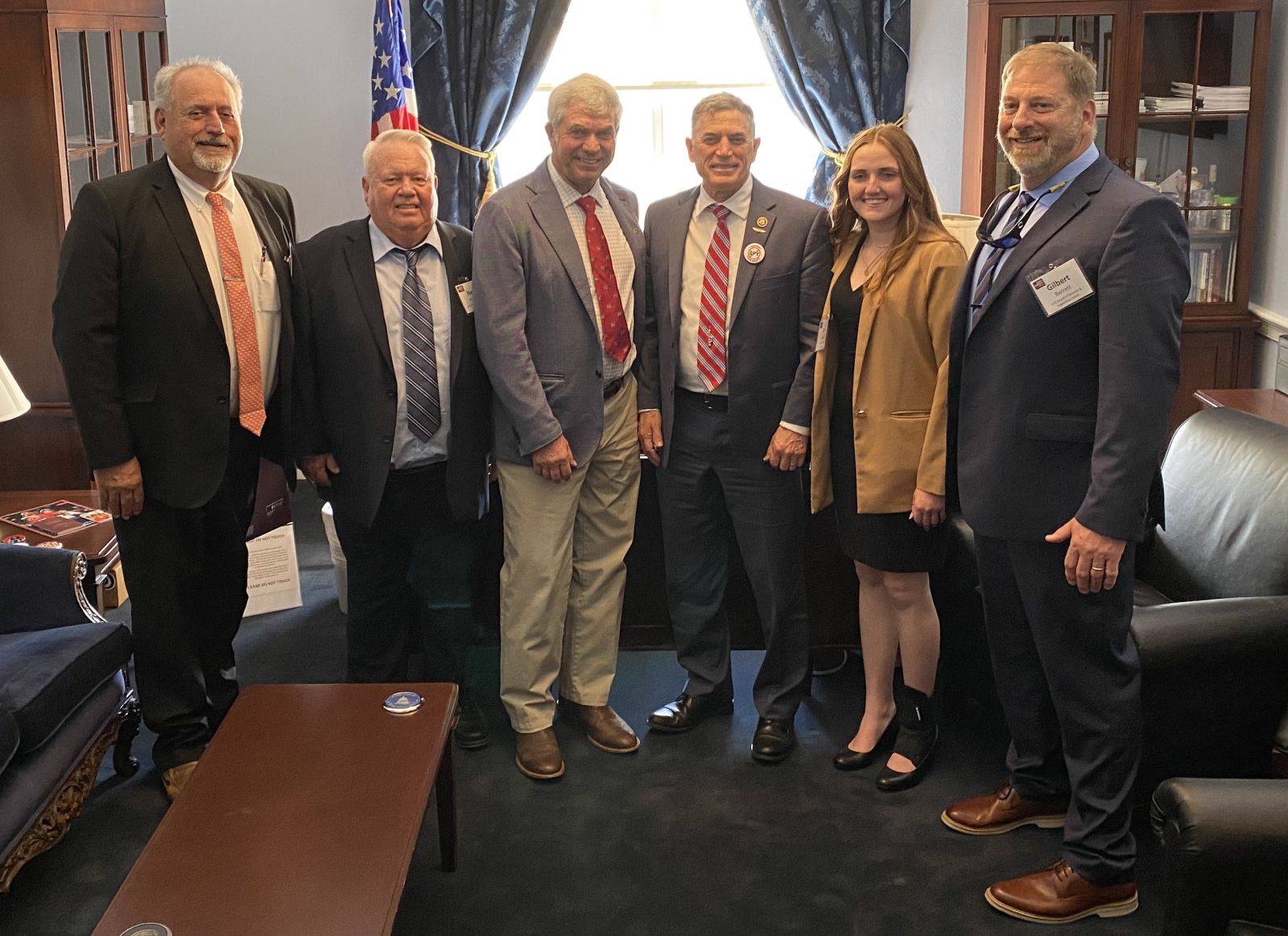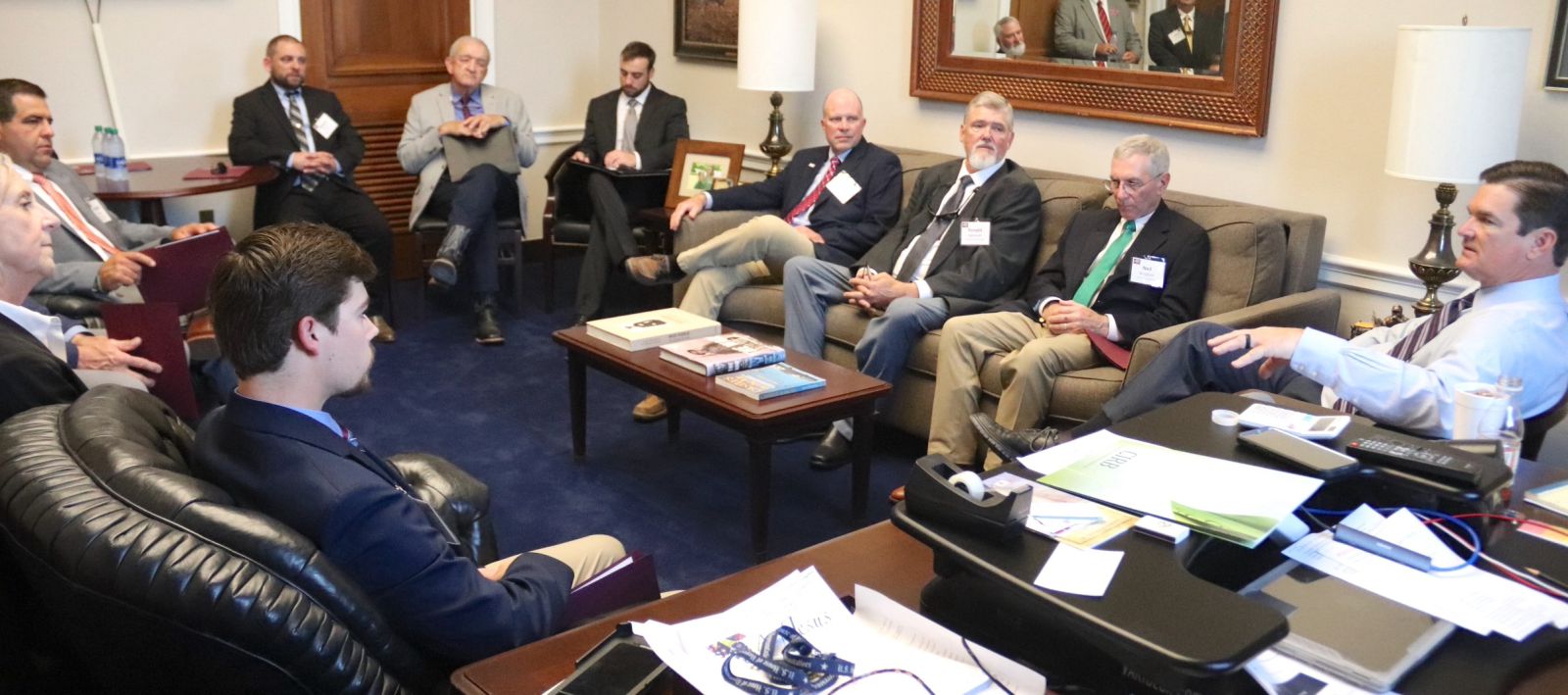test-blog
Farm bill, NASS key topics for GFB trip to Washington, D.C.
Posted on May 31, 2024 8:38 AM
 GFB members toured the American Farm Bureau Federation’s office during an April trip to Washington, D.C. /Photo by Damon Jones
GFB members toured the American Farm Bureau Federation’s office during an April trip to Washington, D.C. /Photo by Damon Jones
By Jay Stone
Georgia Farm Bureau (GFB) members and staff visited Washington, D.C., in April to meet with members of Georgia’s congressional delegation and hear updates from American Farm Bureau Federation (AFBF) staff.
In congressional visits, GFB members shared the organization’s position on the Endangered Species Act, avian influenza and poultry health regulations, access to pesticides and needs they hope the new farm bill will address.
“When we can bring farmers who actually do what we do for a living to talk to the policy makers in Washington, it affects everybody, the ones that are here, and the ones back home that couldn't be here,” said GFB President Tom McCall.
Farm bill
In an April 9 meeting at the AFBF offices, U.S. Sen. Jon Ossoff gave a briefing on farm bill progress.
“I’m cautiously optimistic that we’re on a glide path to getting a new farm bill done this fall,” Ossoff said.
The first-term senator outlined some of the challenges to completing a new farm bill, saying he is not hearing much discussion on including ad hoc disaster assistance programs. Ossoff noted while farmers’ losses, like the late freeze that decimated the 2023 peach crop, are a major concern, there are other ways he can help, including diplomatic trade efforts and contacting foreign consulates when visa issues hinder access to migrant labor.
“We want to strengthen the [commodity] insurance programs if possible,” Ossoff said. “I'm asking the agriculture committee to consider a pilot program that would present some remedies for U.S. specialty crop growers who are facing import competition where the competitive disadvantage that we have on wages and regulation is so significant that it's just very, very challenging to compete.”
AFBF staffer Joe Gilson broke down what spending might look like in the next farm bill, saying it needs to respond to a changing agribusiness environment.
“In 2018 when the farm bill was passed, farming looked a lot different than today,” Gilson said. He recognized the need for commodity assistance to evolve as farmers’ challenges evolve. “Our number one priority at Farm Bureau is to increase [commodity] reference prices.”
Gilson said the total spending in the farm bill could be $1.5 trillion, with about $1.2 trillion of that going to nutrition assistance programs.

GFB members visit Ga. 9th Congressional Dist. Rep. Andrew Clyde, third from right. /Photo by Alex Bradford
Labor
The GFB group also heard from AFBF government affairs staff John Walt Boatright, Courtney Briggs and Economist Bernt Nelson.
Boatright gave an update on labor and showed results of a Gallup poll indicating 71% of Republicans, 36% of Independents and 19% of Democrats say they want decreased immigration to the U.S.
“When members of Congress go home, no matter if they're talking to an independent, Republican or a Democrat, they're hearing that we need decreased immigration in the United States. That doesn't help our cause when we start talking about the reforms we need to see in the H-2A program,” Boatright said.
Boatright noted inaction by Congress gives federal agencies an opportunity for rulemaking.
“In the past 18 months, we've had eight different rulemakings that have occurred that affect agricultural employers, and in some cases specifically H-2A employers,” he said.
NASS to discontinue cattle report and cotton survey
Nelson reviewed factors affecting the U.S. cattle inventory after the National Agricultural Statistics Service (NASS) January report showed the national cattle herd at its smallest number since 1951.
While the GFB group was in Washington, NASS announced it is discontinuing the July Cattle Inventory Report due to budget constraints. NASS is also halting the Cotton Objective Yield Survey and all county estimates for crops and livestock beginning with the 2024 production year.
“When you're looking at our Price Loss Coverage or some of the insurance and county level data, that type of data is available through RMA (Risk Management Agency) rather than NASS,” Nelson said. “So that one has a bit of a replacement and that may be one of the reasons that cutting that July inventory report is a big deal. This includes county level estimates for both crops and livestock sector. Cotton can get it from RMA, but there’s other crops and cattle that we can't get that county level data anywhere else. We're going to be down to just one report on January first that reduces our ability to manage risk. This is a gargantuan blow to transparency and undoes so much of what the MS did with the cattle contract library.”
Ga. 8th Congressional Dist. Rep. Austin Scott, far right, discussed the pending farm bill when he met with GFB members' in his office. / Photo by Jay Stone
Update on federal water issues
Briggs reviewed the ongoing legal challenges surrounding water. While farmers were encouraged by the Supreme Court’s decision in Sackett v. EPA, which struck down the significant nexus test as a means for defining what constitutes a water of the United States, the EPA and U.S. Army Corps of Engineers’ updated rule to comply with the court’s order fell short of providing much-needed clarity.
“What the conforming rule didn't do was, it didn't give more clarification to what ‘relatively permanent’ means,” Briggs said. “That was a perfect opportunity for the agencies to do that. But they don't want to do that because when they leave these terms very ambiguously defined, again, it gives them more authority and ability to push to the outer bounds of what is legal. When you don't give a clear definition of what relatively permanent means in the linchpin of how to regulate and establish jurisdiction, of course even the regulators are confused about how to implement this moving forward.”
Briggs noted that some states are starting to reassess what waters of the state are being protected and encouraged GFB members to keep an awareness of state actions pertaining to jurisdictional control over bodies of water.
